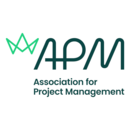Dynamic conditions for project success
This report (published in 2021) identifies organisational, professional, and socio-economic dynamic conditions that can enhance project outcomes and explores how project professionals and project-based organisations have already applied them. This report is separate from the ‘2015 Conditions for Project Success’ on the basis that the study examined primarily non-project related factors that nonetheless can affect project success. This study occurred under unprecedented circumstances amidst the COVID-19 pandemic. All aspects of the study took place entirely virtually; this served to shape the responses from the project management community.
The research team gathered the data using a systematic literature review, interviews with a cross-section of 37 project professionals, and a survey that attracted a total of 1,015 responses. The analysis identified nine dynamic conditions drawn from the relevant academic literature and refined through the research process which are:
- interpersonal skills;
- training and certifications;
- team ethos;
- technology and data;
- contracts;
- knowledge management;
- agility;
- sustainability;
- diversity.
A number of these nine dynamic conditions correspond to some of the main trends seen within the wider project profession that we have helped to drive forward such as a greater emphasis on the use of technology and data [1], the drive to net-zero and sustainability [2], improving diversity and inclusion [3], and developing an agile mindset to respond to ever-changing project environments [4].
The study highlights opportunities for project management organisations and professionals to improve project success and project outcomes, including prioritising informal mentoring, improving data analysis and decision making with technology and AI, and establishing knowledge management roles for more effective learning from past projects. For project professionals, this work advises on specific mindsets and activities that can help to support and develop their teams. These activities can help to ensure that their projects create a legacy that can underpin long-term organisational success.
For organisations, this work advises on how to apply the report and more specifically the Key Success Indicators (KSIs) needed to implement each dynamic condition, which can guide and support the implementation of the report’s findings. The report also draws on case illustrations from the interviews to show how different project professionals and project based organisations have already demonstrated good practice in applying these dynamic conditions.
At a theoretical level, this report addresses the evolving scope of project success away from focussing on success factors for individual projects towards dynamic conditions ensuring success for project-based organisations and their portfolios. The KSIs ‘close the loop’, providing an alternative end-point analysis compared to critical success factors that are more readily applied and assessed at project inception.
We look forward to working with key stakeholders and the project profession in applying the findings and recommendations from the research to enhance project success and improve project outcomes.
The report is available to download here.
References
- [1] APM, ‘Fourth Industrial Revolution’, 5 August 2019, APM, ‘Risk and Data Analytics – Predicting the Future?’, Risk and Data Analytics – Predicting the future?, 10 June 2021.
- [2] APM, ‘Climate Change, Clean Growth and Sustainability’, Climate change, clean growth and sustainability, 5 August 2019.
- [3] APM, ‘Diversity and Inclusion’, Diversity and Inclusion, 2021.
- [4] Brian Wernham et al., Directing Agile Change, 2016; APM, ‘Agile Project Management’, Agile project management, 20 September 2017.
--Association for Project Management
Related articles on Designing Buildings
- A new theory for managing large complex projects.
- Advanced manufacturing.
- Agile construction.
- Artificial intelligence.
- Association for Project Management.
- Association for Project Management articles.
- Dynamic briefing for building design.
- Knowledge management.
- Lean construction - a quality perspective.
- Lean construction.
- Project management.
- Resource management.
- Supply chain management.
- Understanding agile in project management.
Featured articles and news
The UK's Modern Industrial Strategy: A 10 year plan
Previous consultation criticism, current key elements and general support with some persisting reservations.
Building Safety Regulator reforms
New roles, new staff and a new fast track service pave the way for a single construction regulator.
Architectural Technologist CPDs and Communications
CIAT CPD… and how you can do it!
Cooling centres and cool spaces
Managing extreme heat in cities by directing the public to places for heat stress relief and water sources.
Winter gardens: A brief history and warm variations
Extending the season with glass in different forms and terms.
Restoring Great Yarmouth's Winter Gardens
Transforming one of the least sustainable constructions imaginable.
Construction Skills Mission Board launch sector drive
Newly formed government and industry collaboration set strategy for recruiting an additional 100,000 construction workers a year.
New Architects Code comes into effect in September 2025
ARB Architects Code of Conduct and Practice available with ongoing consultation regarding guidance.
Welsh Skills Body (Medr) launches ambitious plan
The new skills body brings together funding and regulation of tertiary education and research for the devolved nation.
Paul Gandy FCIOB announced as next CIOB President
Former Tilbury Douglas CEO takes helm.
UK Infrastructure: A 10 Year Strategy. In brief with reactions
With the National Infrastructure and Service Transformation Authority (NISTA).
Ebenezer Howard: inventor of the garden city. Book review.
The Grenfell Tower fire, eight years on
A time to pause and reflect as Dubai tower block fire reported just before anniversary.
Airtightness Topic Guide BSRIA TG 27/2025
Explaining the basics of airtightness, what it is, why it's important, when it's required and how it's carried out.
Construction contract awards hit lowest point of 2025
Plummeting for second consecutive month, intensifying concerns for housing and infrastructure goals.
Understanding Mental Health in the Built Environment 2025
Examining the state of mental health in construction, shedding light on levels of stress, anxiety and depression.























